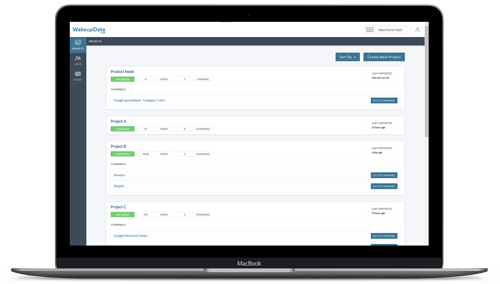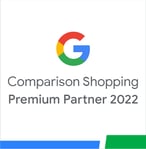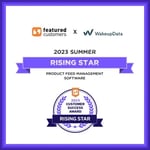Site Hacks: 4 Brilliant Ways Experts Increase Website Traffic
Posted on August 24, 2020 (Last Updated: July 02, 2021)
Marketing teams can spend all their resources creating beautiful, visually-stunning websites while overlooking one important aspect: getting people to it.
Driving traffic to their website is a challenge for many businesses. Can your business even survive if no one is visiting your site?
Marketers need to focus just as much on campaigns that drive traffic to their sites as they do on website architecture, design, and development.
If they don’t, their work won’t pay off and their business could fail. Approximately 9 in 10 startups don’t survive with marketing being one of the reasons why.
Thankfully, there are a variety of different ways marketers can drive interest and traffic to their site through optimization, targeted campaigns, and more. In this article, we’ll take a look at four effective ways to increase website traffic and get your customers browsing your site.
1. Facilitate social selling.
Social selling is the art of creating content that consumers will share on social media that leads followers and fans to your site to purchase.
Bloggers, influencers, and even customers can be great partners to have when you’re launching a new website. If their followers are aligned with your target audience, they can raise awareness about your brand and help you acquire customers at a low cost.
Marketers should develop campaigns for each type of partner they’re working with.
First, start with your existing customers. Give your customers an incentive to sell for you.
Future Kind, a vegan supplement brand, invites customers to become their salespeople in their ambassador program. This rewards customers who promote the brand to their friends and family, resulting in additional traffic to the brand’s site and an increase in conversions.
By having an official ambassador program, you are making your customers feel as though they are a part of the team. This will lead to higher customer loyalty levels, and ultimately, more new potential customers learning about your brand.
Getting Started with Bloggers and Influencers
Build on the success of your ambassador program by partnering with bloggers and influencers — some of the ultimate ambassadors for your brand.
They can help you establish strong social proof on your site, bringing in even more traffic that stays around to convert.
To work with bloggers and influencers, reach out directly to them via social media or email. There’s email software available that can tell you if they’ve opened your email and help you craft the perfect pitch. This can help increase your chances of getting a response.
After you get in contact, ask if they’d be interested in trying your product in exchange for a review or a post. You can even request a quote to include in an article you’re writing for your blog. They’ll likely want to be included since it provides more exposure for them.
Coordinate with influencers to find the best time to post. Share their post on your brand-owned social channels. If you’re writing a blog that’s featuring them, send it to them once it’s published. You can ask them to share it on their social media accounts or in their newsletter.
By doing so, their followers will learn about your brand and will explore your website.
2. Focus on search engine optimization.
If your website isn’t optimized, it’s not complete.
Building a website that isn’t optimized for search engines is like buying a new car, but not wanting to put any gas in it. It’s just something you need to do.
Optimized websites rank high on search engines and reap the benefits of customers searching related product terms. After all, Google was the most visited site in the world last year. Why wouldn’t businesses want to capitalize on prospects searching for their products?
Organic visitors can be an ongoing source of website traffic that increases over time. That’s why businesses need to devote time to planning and executing an effective SEO strategy.
A comprehensive SEO strategy involves two types of tactics: on-page and off-page SEO.
On-page SEO refers to all the aspects that you directly control on your site, including creating pages with content that reflects the search intent of specific focus keywords. In addition, it involves examining page speed, relevancy, mobile optimization, and the user experience.
Look at how Medical Alert Users Buyer’s Guide handles their on-page SEO. This is a review site for medical alert products. Each review is on a different page, and all of them are listed in the footer.
This is important because it allows them to optimize each review for a specific focus keyword.
For example, the title of each review is the same keyword phrase their readers would input into a search engine. It would be much harder to rank for multiple medical alert products by name if they were all on one single webpage.
They also routinely update the articles in order to make sure the content is current. This helps keep the pages relevant — another factor search engines use for determining your page’s rank.
Off-page SEO includes link building and other activities that happen off of your site. Link building is the process of getting other sites to add external links on their site for your post. This increases your website’s domain authority and sends signals to Google that your content is relevant and valuable to readers.
Disregarding basic SEO tactics is almost dooming your site to fail. Every business should invest in SEO to ensure that their site is constantly working for them by performing well in search.
3. Activate offline for online conversions.
Sometimes the best way to get people to your site is to ensure that your product is top-of-mind while your customers go through their daily routine.
If your brand’s top of mind, they might just type in your URL directly. Direct traffic was the most popular source of website traffic, accounting for the largest share of visits (55%).
Natively integrating your product or promotions into settings that your target customers spend time at will increase brand recognition and drive site visits.
For example, LMNT, a company producing zero-sugar hydration packs, partners with gyms all around the country to get their products in front of their consumers.
They provide samples to gyms to pass along to their members. In addition, this can turn into a valuable distribution strategy for LMNT which could sell their product there as well.
To amplify the partnerships, LMNT shares social media posts that the gyms and their members share on their Facebook and Instagram accounts. The company even has a featured Instagram Story section dedicated to the program.
This expands on their in-person activations and connects it to others that may not have been able to experience it live. Content from events and activations is useful when it is repurposed for social media.
By integrating your product into an in-person activation, you’ll facilitate interest in your company, resulting in increased search traffic and conversions.
4. Pitch podcasts and press.
Media sites, newsletters, and podcasts have countless numbers of subscribers that may be interested in your product. All you need to do is get your company in front of them.
Long-form content and media sites are valuable sources of referral traffic for brand websites. Marketers need to proactively pitch their products and founders to get them featured and natively integrated in these types of content.
Founder features and interviews are great ways to explain the story behind the product, brand, and mission. As founders participate in interviews for podcasts or the press, they should focus on their company’s value proposition.
A value proposition is the “promise a company delivers for its customers.” This succinct, simple promise is an effective sound bite that can sum up the company in a way that readers and listeners will remember.
However, the message will only resonate with the right audience if it’s presented in the right publication. So which publications should companies try and pitch?
Brands shouldn’t always focus on national or global publications. While those might be ideal (and a dream) for most companies, niche, targeted media sites can be effective. Often, those publications or podcasts have an engaged audience that may be highly relevant for your brand.
Brands that develop strong relationships and proactively work with media sites, newsletters, and podcasts can generate a lot of free publicity. If they’re successful, this can be one of the most important — and cost-efficient — ways to drive site traffic over long periods of time.
Conclusion
No matter how visually impressive your website is, you need traffic in order for anyone to appreciate it. Thankfully, there’s many effective marketing tactics brands can deploy to drive relevant customers to their sites.
- Facilitate social selling by working with existing customers, influencers, and bloggers.
- Focus on search engine optimization to capitalize on organic search traffic.
- Launch offline, in-person activations that drive consumers to your online store.
- Proactively pitch podcasts and press to increase brand awareness.
By executing these tactics, you’ll get new customers to your site on a routine basis and drive revenue in a meaningful way for your business.
Author Bio
Ezekiel Cohen has a special affinity with numbers and patterns, on top of being a natural at PR. This gives him the edge when it comes to SEO analytics and advertising strategy.



